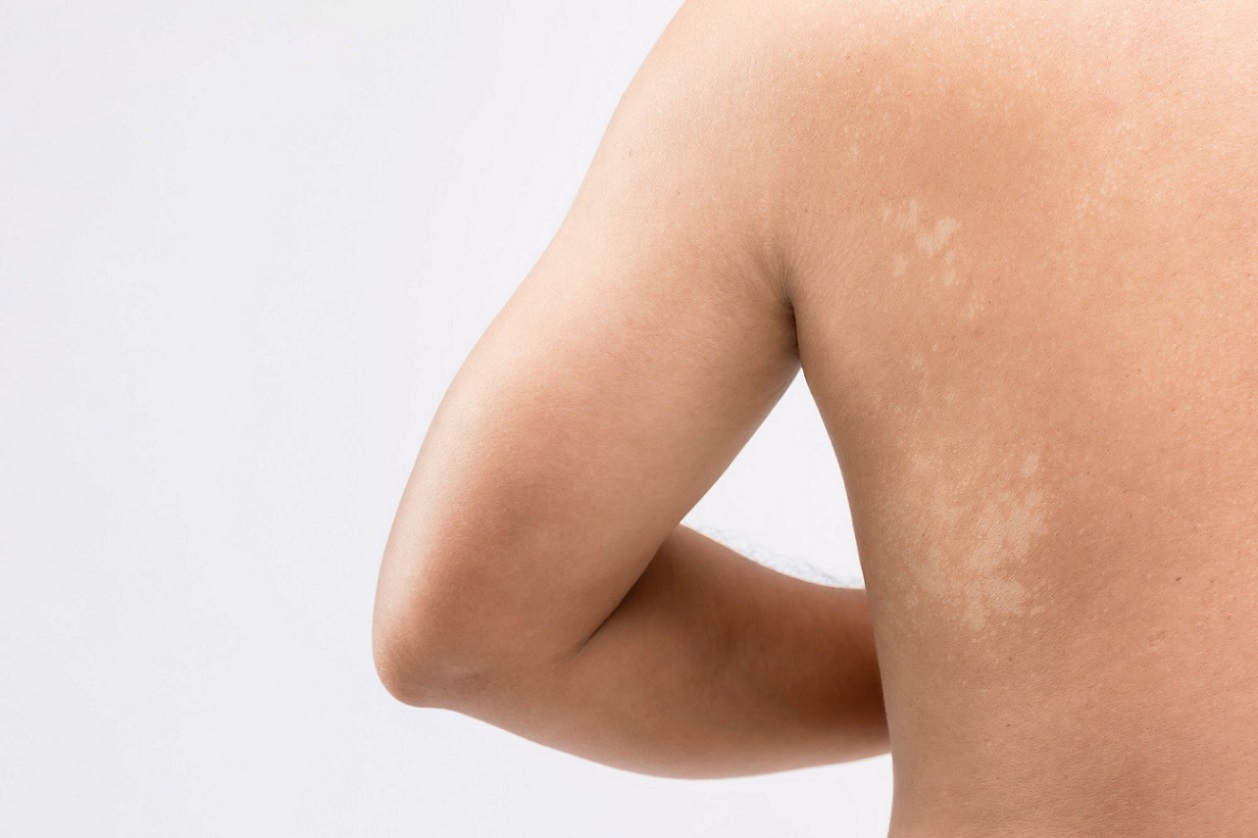The Toronto Dermatology Centre is one of the top places in Canada to manage your skin infections such as the fungal infection tinea versicolor. Our staff of outstanding dermatologists offer both a comprehensive assessment and diagnosis of your skin, and also discuss all the treatment options (creams, pills, shampoos & prevention).
Tinea versicolor is a common skin condition due to overgrowth of skin surface yeast. This overgrowth results in uneven skin color and scaling that can be unsightly and sometimes itch. The yeast normally lives in the pores of the human skin and thrives in oily areas such as the neck, upper chest, and back.

What Does Tinea Versicolor Look Like and How do you Recognize It?
Tinea versicolor has small, scaly white-to-pink or tan-to-dark spots scattered typically over the upper arms, chest and back. The fungus grows slowly and prevents the skin from tanning normally. As the rest of the skin tans in the sun, the pale spots, which are affected by the yeast, become more noticeable, especially on dark skin.
Who May Get This Rash?
Most people get tinea versicolor when they are teenagers or young adults. It is rare in the elderly and children, except in tropical climates where it can occur at any age. People with oily skin may be more susceptible than those with naturally dry skin.
The yeast is normally present in small numbers on everyone’s skin. Anyone can develop an overgrowth of yeast. During the summer months when the temperature and humidity are high, the yeast can increase. The excess yeast on the skin prevents the normal pigmentation process, resulting in light and dark spots. In tropical countries with continuous high heat and high humidity, people can have these spots year round. In other climates, the spots generally fade in the cooler and drier months of the year. Why some people get tinea versicolor and others do not is unclear.
How is Tinea Versicolor Diagnosed?
In most cases, the appearance of the skin is diagnostic. Occasionally, examination of the fine scales scraped from the skin is occasionally performed or a special light (“Wood’s light”) may help to make the diagnosis by showing a yellow green color where the skin is affected.
How Is It Treated?
Tinea versicolor treatment is made with topical or oral medications. Topical tinea versicolor treatment includes special cleansers including some shampoos, creams, sprays or lotions applied directly to the skin, typically for 2-4 weeks.
An oral anti fungal medication (e.g. Itraconazole) for 3-7 days has been used successfully to treat tinea versicolor, especially in resistant or stubborn cases, or when the condition is extensive, or when affected areas cannot be reached by topicals (e.g. on the back). Because of possible side effects, or interactions with other medications, the use of these oral prescription medicines should be supervised by your dermatologist. After any form of treatment, the uneven color of the skin may remain for months after the yeast has been eliminated until the skin re-pigments normally on its own.
Tinea versicolor may recur. Special cleansers with selenium sulfide (e.g. Selsun or Versel) and shampoos with zinc pyrithione (e.g. Head & Shoulders) may decrease episodes when used once or twice a week, especially during warm humid months of the year.
Here is a selection of media articles quoting our renowned dermatologists Dr. Benjamin Barankin and Dr. Anatoli Freiman as they pertain to tinea versicolor.
| Tinea Versicolor, The Canadian Journal of Diagnosis | |
| Tinea Versicolor, Scholars Journal of Medical Case Reports |
